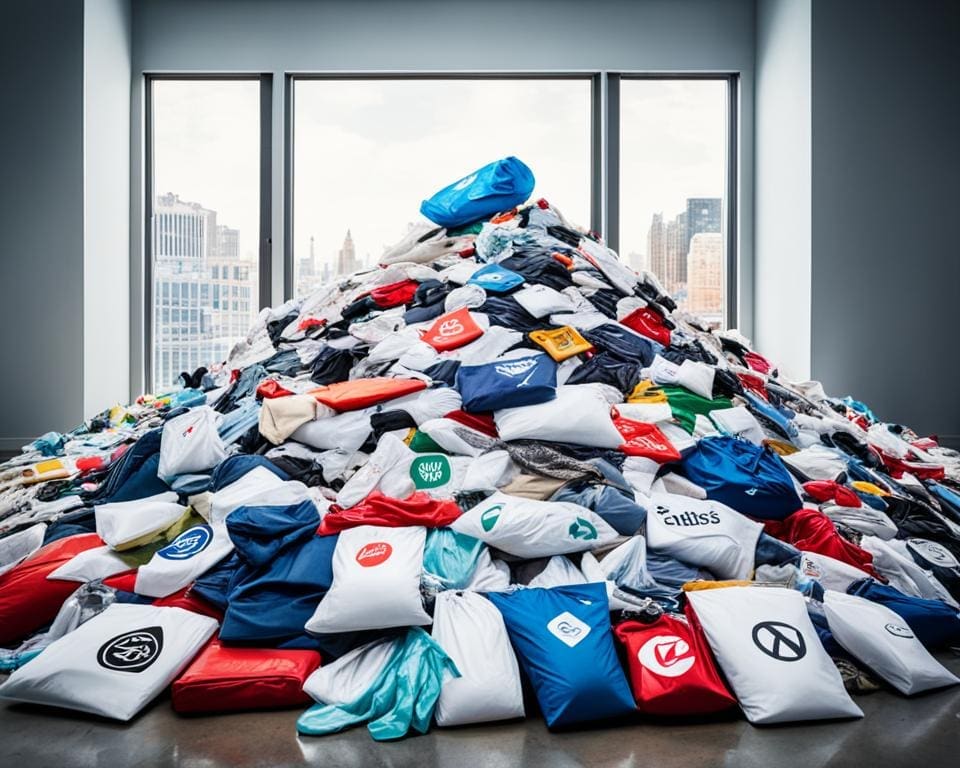Over the past decade, the fast fashion industry has boomed. It has changed how we shop and the retail world. By looking into giants like SHEIN and Temu, we learn their tricks. They use quick production and smart marketing to stand out. Technology has helped them too, making it easy to produce lots of clothes quickly and cheaply.
But, this success is not without problems. A shocking 93% of fashion brands underpay their workers. The moral issues are clear. The fast fashion model is also bad for our planet. It causes 10% of the world’s carbon emissions and lots of water pollution. Every year, tons of clothes are thrown away, cluttering our landfills. We will take a closer look at this industry, including important stats and growth reasons.
The Fast Fashion Market Analysis
The fast fashion market is dynamic, shaped by what consumers want, its impact on the planet, and how it affects the economy. Changes in the industry force brands to adapt quickly. They need strategies that meet what people are looking for.
More clothes are being made quickly to catch shoppers’ interest. However, this leads to worries about whether we’re harming the planet or not doing right by workers.
Understanding Market Growth
Fast fashion has grown massively. Brands are tapping into our love for cheap, stylish clothes. In the last 15 years, the amount of clothes made has almost doubled.
Big names like SHEIN and Temu are leading the charge. SHEIN, for example, adds 2,000 new pieces to its collection each day. This constant newness has helped the industry reach about $2 trillion worldwide.
- Over 30% of daily packages shipped to the U.S. are from SHEIN and Temu, making nearly 600,000 shipments each day.
- In Germany, around 400,000 parcels arrive daily from these fast fashion giants.
- In China, the production of synthetic fibres has skyrocketed, enough to make over 100 billion T-shirts every year.
Key Statistics in Fast Fashion
Fast fashion is about more than just money. It’s a big cause of carbon emissions, making up 10% of the world’s total.
By 2030, its emissions might go up by 50%. The way we dye clothes is putting 20% of the world’s water at risk. And it takes 2,700 litres of water just to make one T-shirt.
The working conditions in the places making these clothes are often not good. Workers get low pay and face dangers every day. Brands like SHEIN and Temu are also under the spotlight for breaking import rules and human rights issues. We need to watch these brands closely.

Competitive Landscape of Fast Fashion
In the fast-paced world of fast fashion, brands fiercely compete for the top spot. They use new strategies that have changed the industry. Shein leads by quickly bringing in lots of products and meeting the needs of budget-conscious shoppers. They add thousands of items every day, outdoing older brands and attracting a lot of attention, especially from young people. This focus on low prices has won over 55% of Gen Z shoppers, pushing Shein’s downloads to over 261.9 million.
Successful Fast Fashion Brands and Their Strategies
Shein and other successful brands grow by enhancing their online presence and working with influencers on social media. This approach keeps them current and appealing to young, tech-savvy consumers. By using data analytics, they can match their products with what people want now, strengthening their position. Meanwhile, traditional brands like Zara have set benchmarks but need to speed up to stay in the game.
Innovations in Fast Fashion
In the fast fashion industry, improving how things are shipped is key. Companies send goods in smaller packages or use local warehouses to avoid delays. However, flying goods around the world emits a lot of carbon, raising concerns about sustainability. As the industry faces these issues, it’s crucial to find a balance. They must produce quickly but do so in a way that’s fair and doesn’t harm the planet.









